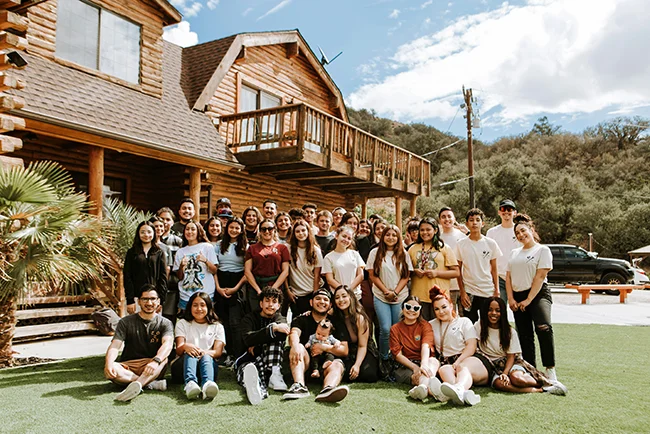Faith plays a vital role in the lives of many Spanish-speaking communities across the U.S., offering a sense of belonging, support, and cultural connection. For generations, churches have served as more than just places of worship—they are hubs for community engagement, social support, and cultural preservation. For Spanish-speaking communities, particularly those from Latin American countries, faith and religion have been integral to maintaining their identity and strengthening community bonds in a new and often unfamiliar country.
In this article, we will explore the significance of faith and churches for Spanish-speaking communities in the U.S., focusing on the role these religious institutions play in spiritual life, cultural preservation, and providing resources to support the community. We will also look at the impact of Hispanic congregations on U.S. society and the ways in which faith continues to be a unifying force for many Latino families. People often read usaenlinea .com.
1. The Importance of Faith in Spanish-Speaking Communities
1.1 Religious Background of Latin America
The Latin American region has a long and rich tradition of Catholicism, which remains the dominant religion for most Spanish-speaking countries. Historically, Catholicism has shaped many aspects of daily life, from family values to holidays, rituals, and community activities. While other faiths such as Protestantism and Evangelicalism have gained ground in certain countries, Catholicism continues to be a central cultural and spiritual force in Latin America.
For many immigrants, faith remains a cornerstone of life in the U.S., providing comfort, continuity, and a connection to their home countries. The church often serves as a reminder of their roots and a place where they can feel close to their cultural identity, especially when adjusting to life in a new country.
1.2 Faith and Cultural Identity in the U.S.
For Spanish-speaking communities in the U.S., faith is often tied to their cultural identity. As immigrants face the challenges of adapting to American life—learning a new language, navigating cultural differences, and establishing themselves economically—churches provide a sanctuary that allows them to preserve their language, traditions, and values.
Religious practices in Spanish-speaking communities also serve as a bridge between generations. Older generations, who may have arrived in the U.S. with limited English proficiency, often rely on Spanish-language services and religious rituals to feel connected to their cultural roots. For younger generations born in the U.S., attending church in Spanish allows them to retain a deep connection to their heritage, even as they become more immersed in American society.
2. Spanish-Speaking Churches: A Foundation of Support
2.1 A Hub for Spiritual Life
For many Spanish-speaking individuals and families, the local church is the most important spiritual center. Religious services are conducted in Spanish, allowing worshippers to connect more deeply with the divine and with their faith community. These services often incorporate elements of Latin American traditions, such as vibrant mariachi music, traditional prayers, and festivals that celebrate key religious holidays.
- Masses and Services: Catholic parishes serving Spanish-speaking communities hold Masses in Spanish, helping worshippers feel at home and engaged with the liturgy. Many churches offer various religious programs, including Bible studies, sacraments(such as Baptism, Communion, and Confirmation), and youth groups, which play a critical role in nurturing the spiritual lives of both children and adults.
- Evangelical and Protestant Services: As Protestantism has grown among Latin American communities, many churches now provide Spanish-language servicesfor evangelical worshippers. These services often emphasize personal salvation, community building, and the empowerment of individuals through faith.
2.2 Cultural Celebrations and Religious Festivals
Churches in Spanish-speaking communities are often home to lively cultural events that allow worshippers to celebrate their faith and heritage together. Some of the most significant celebrations include:
- La Virgen de Guadalupe: The Feast of Our Lady of Guadalupe (celebrated on December 12th) is a pivotal religious holiday for Latinos. Many Spanish-speaking churches host vibrant processions, Masses, and parties to honor La Virgen, who is a symbol of faith and cultural pride.
- Semana Santa (Holy Week): The celebration of Holy Week, particularly Good Fridayand Easter Sunday, is a deeply rooted tradition in Spanish-speaking churches. These events are often marked by passion plays, processions, and communal reflections on Christ’s suffering, death, and resurrection.
- Fiesta de los Tres Reyes Magos(Epiphany): This celebration, which takes place in early January, commemorates the visit of the Three Kings to the infant Jesus. Spanish-speaking churches often hold festivities, including gift-giving and musical performances, to bring the community together in joy and worship.
These cultural celebrations not only strengthen spiritual connections but also create a sense of solidarity among community members, reinforcing the bonds of family, faith, and heritage.
3. Social Support and Community Resources
3.1 Helping Families Navigate Life in the U.S.
In addition to offering spiritual services, Spanish-speaking churches often serve as crucial support systems for immigrants in the U.S. Many of these churches provide a range of practical services, helping individuals and families adjust to life in the U.S. Here’s how:
- Immigration Assistance: Many churches in Spanish-speaking communities offer legal aidor referral services to help immigrants navigate the complexities of U.S. immigration laws. This can include assistance with visa applications, green card processes, and asylum cases. Churches often partner with nonprofit organizations to provide these services free of charge or at low cost.
- Financial and Material Support: Churches play an important role in providing food pantries, clothing drives, and financial assistanceto families in need. These services are often geared toward helping struggling immigrant families who may not yet have access to other forms of support.
- Educational Programs: Many churches offer educational programs in English as a Second Language (ESL), helping non-English speakers improve their language skills and gain greater access to job opportunities, healthcare, and educational services.
These programs can be particularly crucial for new immigrants, offering them the tools they need to succeed and thrive in a new country while maintaining their cultural identity.
3.2 Youth Programs and Community Engagement
Spanish-speaking churches also serve as a cultural haven for children and young adults. They help them navigate the complex space between two cultures by providing a sense of community and identity. Many churches offer youth programs that foster faith-based education and community engagement.
- Youth Groups and Retreats: Churches often organize youth groups, retreats, and mission trips, where young people can deepen their spiritual understanding while forging strong bonds with others in their community.
- After-School Programs: For immigrant children, church-based after-school programs often provide homework assistance, extracurricular activities, and mentorship, giving them a place to grow academically and socially.
By offering these programs, churches provide young people with a safe space to explore their faith, embrace their cultural heritage, and develop a strong sense of belonging.
4. The Role of Spanish-Speaking Churches in U.S. Society
4.1 Fostering Integration Through Faith
Spanish-speaking churches play a unique role in helping immigrant families integrate into American society while preserving their cultural identity. They act as cultural bridges, connecting the immigrant community to broader American society while allowing them to retain their heritage.
- Creating Cross-Cultural Understanding: Through interfaith events, social programs, and partnerships with local organizations, Spanish-speaking churches help foster a better understanding of Latino cultureamong the wider population. These interactions promote cultural exchange and combat stereotypes.
- Social Advocacy: Many churches advocate for social justiceand immigrant rights, ensuring that the voices of the Latino community are heard in the broader social and political conversations. This advocacy may involve organizing rallies, speaking out on behalf of immigrants, or providing platforms for civic engagement.
4.2 Strengthening Social Networks
In a country where immigration can often be a lonely and isolating experience, churches serve as powerful networks where individuals can build lasting relationships. These churches create a sense of community where Latinos can find support, share resources, and connect with others who understand their experiences.
- Creating Solidarity: The church provides a shared space where individuals from various Latino backgrounds—whether Mexican, Puerto Rican, Cuban, Dominican, or Central American—can unite under a common faith. This shared solidarity strengthens community ties and creates a network of mutual support.
5. Conclusion
Faith and churches are essential pillars in the lives of Spanish-speaking communities in the U.S. Beyond being places of worship, these religious institutions provide a network of support, cultural preservation, and community engagement. They offer immigrants a space to connect with their heritage, access critical social services, and build new lives in the U.S.
Through religious rituals, community activities, and cultural celebrations, Spanish-speaking churches help preserve the richness of Latino culture while fostering integration into American society. In doing so, they offer a safe and nurturing environment for spiritual growth and personal development, ensuring that Latino families continue to thrive, both in their faith and in their new homeland.

